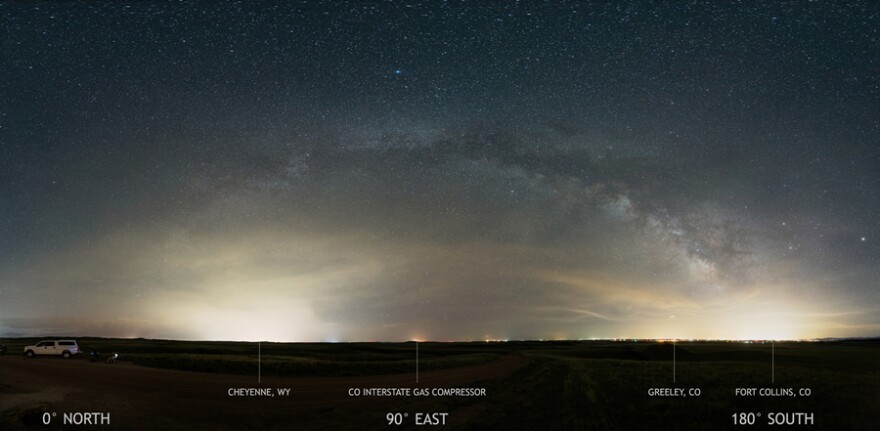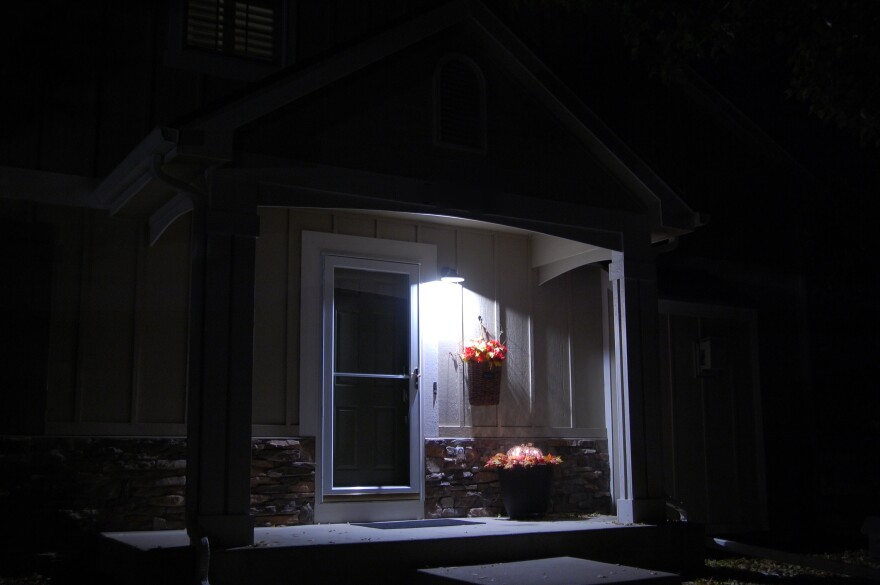If you haven't lately, look up at the night sky where you live. How many stars can you see? Chances are, not many. Light pollution might be preventing you from getting a good view.
Colorado has two night sky "places" accredited by the International Dark Sky Association, where the stars shine especially bright. Both are in the southwestern region of the state.
But it could soon have a third one — this time in northern Colorado.
A group of Fort Collins city staff, with help from Larimer County, wants to certify an area about 30 miles north of the city as the state's newest night sky park.
The proposed park would encompass the neighboring Red Mountain Open Space and Soapstone Prairie Natural Area in Wellington.
Supporters of the move say it could help preserve the spot's naturally dark skies for public viewing while benefiting the area's ongoing wildlife conservation efforts.
The group plans to submit its application to the Tuscon-based IDA at the end of the month. A decision could come as early as 2019.
Growing light pollution
Northern Colorado's population is set to almost double by 2050. The Colorado State Demography Office estimates it will grow from today's count of 700,000 to about 1.3 million people.
Justin Scharton, an environmental planner with the city of Fort Collins, said the region will only get brighter as more cars roll in and homes pop up, potentially exacerbating residents' health problems.
"The impacts to circadian rhythms, stress, chronic illnesses — the research is starting to say if we don't get this night light pollution under wraps we're going to have impacts," he said.
So about a year ago, Scharton helped launch an effort to decrease light pollution.
He said filing an application with the IDA was at the top of the team's to-do list, adding that the Red Mountain and Soapstone Prairie areas immediately stood out as good candidates.
"Luckily for us, there's very little infrastructure up there," he said. "There's a handful of buildings. If we're comparing ourselves to a Yosemite National Park that has hotels and dozens and dozens of buildings — we have almost nothing."

Shortly after beginning the process, he discovered the designations were difficult to get. For starters, the application was 53 pages long.
The IDA, he soon learned, was also very selective. Since its formation in 2001, the association has only certified about 100 dark sky areas across the world.
Amanda Gormley, an IDA spokeswoman, said it was because they require applicants to take concrete steps to ensure dark areas truly stay dark.
"Oftentimes it requires an inventory of the lighting and changing out lighting that's environmentally-friendly and protects the dark skies and working with local government entities to enact lighting ordinances that will protect the night skies," she said.

Fort Collins has changed its lighting and building codes in recent years to reduce light pollution, and earlier this year they began the process of updating the code to better meet the IDA's stringent standards.
The city now requires new home and commercial developments to use pollution-mitigating outdoor lamps. Staff, like city engineer Gary Schroeder, are also encouraging owners of older homes to invest in new fixtures.
With the owner's permission, Schroeder showed me a house on the southeast side of town that recently made the switch. It was dark out, but the light clearly illuminated the front door and decorative fall pumpkins.
"It's got a black circular hood around it," Schroeder said, describing the fixture. "It's providing that cut-off aspect that we want to prevent the up-light and side-light and reduce the glare."
He said if everyone had these fixtures, Fort Collins' light dome and other growing cities such as Greeley and Loveland's would be much smaller.
But it's not a cheap fix. A single lamp goes for around $60.
Visiting Red Mountain
Rod Cerkoney and I strolled along a dirt trail at the Red Mountain Open Space in northern Larimer County, our necks craned up to take in the view. Suddenly, something caught his eye.
"Oh hey! Look at that," he shouted. "Here's the Big Dipper."
Cerkoney, an amateur astronomer and night sky photographer, pointed out constellations left and right.
Bands of the Milky Way floated like clouds. I could clearly make out both Jupiter and Saturn.

But there's also a dome of yellow-orange light on the horizon.
"That's Fort Collins," Cerkoney said, shaking his head.
Even here, about an hour's drive away, the city's light was impossible to escape.
"This is all directly related to growth," he said. "I mean, if Fort Collins wasn't there you wouldn't see that light."
He snapped a photo of the Milky Way, saying light pollution doesn't just get in the way of a good picture. He said most of us are so used to it that we forget to look up and enjoy the cosmos.
"When I get my binoculars out and I look at the Andromeda Galaxy, I like to think that there's somebody up there with a pair of binoculars looking down at me," he said. "I don't know. It's just, it's mind boggling."
Access to Red Mountain and Soapstone Prairie is currently limited to daytime hours, except for special events.
That would change if the IDA application is successful.








